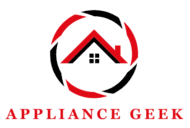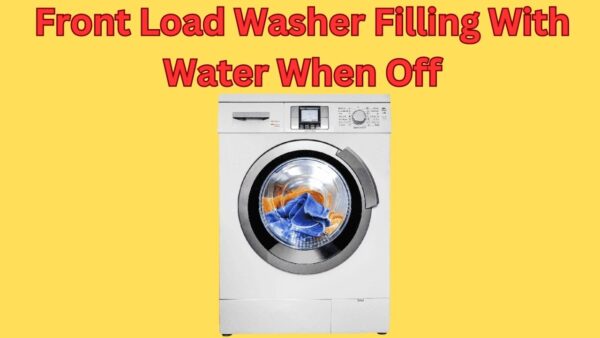If you’re noticing that your GE washer’s water level seems too low, you’re not alone.
This is a common issue faced by many users, and it can indeed be frustrating.
But don’t worry, there are several solutions available that can help address the problem.
This guide will walk you through some of the most effective fixes to ensure your laundry comes out clean and fresh every time.
GE Washer Water Level Too Low

1. Faulty Water Level Switch
A faulty water level switch could be a significant reason behind your GE Washer’s low water level.
This component is responsible for regulating the amount of water in the washer drum.
If it malfunctions, it may underestimate the necessary water level, resulting in insufficient water for a proper wash.
Fix
To resolve this issue, first, inspect the switch for any visible damage.
If there’s none, you may need to test its functionality using a multimeter.
If the switch is defective, replacing it should restore your washer’s water level to normal.
2. Obstructed Water Inlet Valve
An obstructed water inlet valve can be a potential cause for your GE Washer’s water level being too low.
This valve is responsible for controlling the amount of water that enters your washing machine.
Over time, dirt, debris, or mineral deposits can build up, causing the valve to be partially or fully blocked.
This obstruction restricts the flow of water, resulting in a lower water level.
Fix
The solution is simple but requires careful attention. Turn off the water supply and disconnect the hoses.
Inspect the valve and remove any visible obstructions. If the issue persists, you may need to replace the valve.
Always remember to consult your washer’s manual or a professional if you’re unsure about the process.
3. Blocked Pressure Hose
A blocked pressure hose can often be the culprit behind a washer’s low water level.
This hose connects the washer’s outer washtub to its water level pressure switch.
When the pressure hose becomes blocked or kinked, it miscommunicates the water level to the switch, resulting in insufficient water.
Fix
Resolving this issue typically involves removing any blockages in the hose.
If the problem persists, it may be necessary to replace the pressure hose altogether to ensure your washer fills up to the appropriate level.
4. Broken Timer
The timer of a GE washer plays a critical role in controlling the water level during the wash cycle.
A malfunctioned timer could result in inadequate water levels, leaving your clothes insufficiently washed.
This issue may be identified by observing inconsistent filling times or abrupt endings to fill cycles.
Fix
The solution is to replace the faulty timer with a new one.
However, as it involves electrical connections, it’s recommended to call for professional help to ensure a safe and proper repair.
5. Clogged Water Filter
A clogged water filter may be the culprit if you’re finding your GE washer’s water level too low.
The water filter plays a critical role in maintaining the proper water flow into the washer.
Over time, however, it can become blocked with debris or mineral deposits, causing a decrease in water level.
Fix
Don’t worry, this is a relatively easy fix. Begin by turning off the water supply to the washer.
Next, locate the filter (refer to your owner’s manual if needed), remove it, and clean it thoroughly under running water.
If cleaning doesn’t do the trick, it might be time to replace the filter altogether.
Always remember to consult with a professional if you’re unsure about performing these tasks yourself.
6. Damaged Water Inlet Hose
A damaged water inlet hose can be a significant cause of a low water level in your GE washer.
This hose is responsible for supplying water from your home’s plumbing to the appliance.
If it’s punctured, kinked, or blocked, the water won’t flow adequately, resulting in a low water level during the wash cycle.
Fix
A simple solution is to inspect the hose for visible damages or blockages. If you spot any, consider replacing the hose or removing the obstruction.
Always ensure the hose is connected securely and not kinked to allow for a smooth water flow.
7. Malfunctioning Load Size Selector
The Load Size Selector on a GE washer is designed to adjust the water level based on the size of the laundry load.
When this component malfunctions, it may result in a low water level, regardless of the load size.
This is often due to the selector switch being worn out or damaged.
Fix
The solution involves replacing the faulty part with a new one.
In most cases, it’s advisable to consult with a professional appliance repair technician to ensure the part is replaced correctly and safely.
8. Faulty Electronic Control Board
The electronic control board is the brain of your GE washer, orchestrating and managing all its operations.
If faulty, it may incorrectly interpret sensor signals, often resulting in an improper water level during the wash cycle.
Fix
Solutions for this issue may range from resetting the control board—unplugging the washer for a minute and then plugging it back in—to replacing the control board entirely if the reset does not resolve the problem.
Always remember, working with electrical appliances carries risk; if you’re uncomfortable performing these tasks, it’s advisable to seek the help of a certified technician.
9. Worn Out Drive Belt
A worn-out drive belt in your GE washer can lead to issues with the water level.
This belt connects the motor to the drum, facilitating the rotation which is essential for the proper functioning of the washer.
Over time, due to wear and tear, the drive belt can deteriorate, affecting the washer’s operation including water filling.
Fix
The solution to this problem is replacing the worn-out belt.
It is a straightforward task that you can complete yourself with the right tools and a replacement belt, or you can call a professional to handle it if you’re not comfortable doing it yourself.
Regular maintenance checks can prevent such issues and help in maintaining the efficiency of your washer.
10. Unstable Water Supply
An unstable water supply can significantly affect the water level in your GE washer.
If the water pressure in your area is low, or there are issues with the plumbing connected to your washer, it may lead to insufficient water filling the drum.
Fix
It’s crucial to ensure that the water supply is stable and the pressure is appropriate for your washer’s requirements.
If you suspect plumbing issues, consider contacting a professional plumber or your local water company to check for any supply disruptions.
This will ensure that your washer gets adequate water and operates at its peak performance.
11. Erroneous Sensor Readings
Erroneous sensor readings can often be the culprit behind your GE washer’s water level being too low.
The machine relies on sensors to determine the appropriate amount of water for each load.
If these sensors are malfunctioning, they may inaccurately gauge the water level, causing the machine to fill with less water than needed.
Fix
A plausible solution involves testing and, if necessary, replacing the faulty sensors.
It’s recommended to enlist the help of a certified technician to ensure the issue is resolved efficiently and safely.
Remember, tampering with electrical appliances can be hazardous if not handled correctly.
12. Overloaded Washer
Overloading a washer can lead to numerous issues, one of which is a low water level.
When excessive amounts of clothing are added, the washer may struggle to adequately fill up and distribute water, resulting in an inefficient wash cycle.
Clothes may not be properly cleaned, and the machine could also endure unnecessary wear and tear.
Fix
The solution is simple – try to load your washer with the appropriate amount of clothes.
Most washers have a load guideline in the user manual.
Adhering to this guideline will ensure a sufficient water level for an optimal wash, extending the life of your machine and ensuring your clothes come out as clean as possible.
13. Inadequate Water Pressure
Inadequate water pressure can significantly affect the water level in your GE Washer.
This issue can arise due to external factors such as low municipal water pressure or internal issues like a clogged inlet valve.
Low water pressure means the washer cannot fill up to the intended level within the stipulated time, causing the machine to commence the wash cycle with a lower water level.
Fix
To solve this, check your home’s water pressure and consult with your local municipality if it’s lower than standard.
Internally, inspect the inlet valve for any blockages and clean or replace it if necessary.
14. Damaged Fill Tube
A damaged fill tube in your GE washer can result in a low water level.
This tube is responsible for directing the flow of water into the washer’s tub during the filling cycle.
If it’s cracked, damaged, or blocked, it may impede the flow of water, leading to a lower-than-normal water level.
Fix
The solution to a damaged fill tube is the replacement. Unplug the washer and turn off the water supply before carefully removing and replacing the damaged fill tube.
Always consult your washer’s manual or a professional for specific instructions related to your model.
15. Defective Lid Switch Assembly
If your GE washer’s water level seems too low, the problem may lie with a defective lid switch assembly.
This component communicates to the machine when the lid is closed and safe to fill with water.
If malfunctioning, the washer may fill with less water than required, impacting its performance.
Fix
The solution to a faulty lid switch assembly is the replacement. This is a relatively simple repair that involves removing the old assembly and installing a new one.
Always ensure to disconnect the washer from its power source before attempting any repairs.
Conclusion
In conclusion, a GE washer with a low water level can be a source of concern.
It’s crucial to remember that this issue can stem from various factors such as a malfunctioning water level switch, a clogged pressure hose, or an incorrect load size setting.
While some of these problems can be addressed with simple troubleshooting, others may require professional help.
In any case, ensuring the proper function of your washer is critical for efficient clothes washing. Remember to consult your user’s manual or reach out to a professional if the problem persists.
FAQs
How do I increase the water level in my GE washer?
To increase the water level in your GE washer, select the ‘Deep Fill’ option or manually add extra water using the ‘Add Garment’ feature.
Why is my GE washer not filling up with enough water?
Your GE washer may not be filling up with enough water due to a blockage in the inlet hose or because the water level sensor is faulty.
How do I adjust the water level in my washing machine?
Adjusting the water level in your washing machine involves choosing your desired load size or selecting a ‘Deep Fill’ or ‘Water Level’ option, depending on your machine’s features.
How do I reset my washing machine water?
To reset your washing machine water, simply turn off and unplug the machine, wait for a minute, then plug it back in and turn it on.
This basic reset can solve many minor issues.
Whirlpool Washer Won’t Agitate but Will Spin
GE Washer Lid Lock Light Flashing
Why Is My New Whirlpool Washer So Loud
Beko Washing Machine Problems Reset
Speed Queen Wash Spin and Lid Lock Flashing 3 Times
Dryer Taking Multiple Cycles to Dry
Kenmore Washer Lid Lock Flashing
Whirlpool Washer Not Agitating Properly
Whirlpool Washer Locked Light Flashing
Front Load Washer Filling With Water When Off
Why Do Clothes Get Stuck Under Agitator
Why Is My Amana Washer Stuck on Wash Cycle
GE Washer Blinking Green Light


